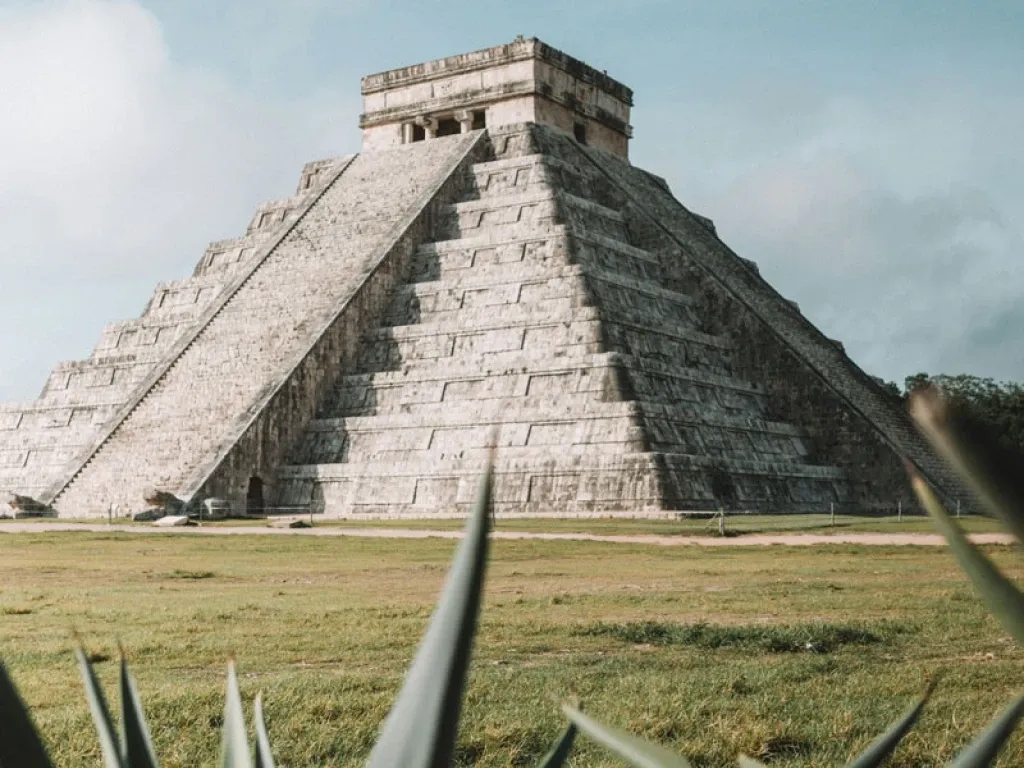
Mérida: The Mexican City Where Maya Culture Lives On
Table of Contents
Located on Mexico’s Yucatán Peninsula near the Gulf of Mexico, Mérida is the capital and heart of Yucatán State. It’s known affectionately as “La Ciudad Blanca” or “The White City,” although the nickname has multiple fabled origins. One popular theory suggests the name comes from the abundant use of white limestone in the city’s early architecture.
The Maya first made their way to the Yucatán Peninsula around 250 CE, arriving in Bacalar from Peten, Guatemala. Eventually, they moved north, arriving in what is now Mérida. The city was established in 1542 by Spanish conquerors who built atop the ancient Maya city, T’ho. The Catedral de San Ildefonso, among the earliest cathedrals in the Americas, was constructed between 1561 and 1598 using stones from nearby Maya sites. While T’ho was destroyed by Spain, Maya culture survived. It’s estimated that more than half of Mérida’s residents speak both Spanish and a Mayan language.
Spanish influences are still notable throughout the historic center, but the city transforms as you head north along Paseo de Montejo, inspired by the glamorous Champs-Élysées in Paris. In the northern part of Mérida, you’ll find modern architecture, trendy shopping malls, and plenty of exciting dining options.
Continually celebrated as one of the safest cities in Mexico, Mérida was among the wealthiest in the late 19th and early 20th centuries thanks to its once-booming henequen industry. Henequen is a fiber derived from the agave plant that was made into rope, often referred to as Yucatán’s “green gold.” Today, many of the sprawling haciendas that were once henequen plantations have been transformed into museums, restaurants, hotels, and more.
A symphony of flavors, from traditional…

Thanks to trade routes and immigration, traditional cuisine in the Yucatán state weaves together Maya, Caribbean, European, and even Middle Eastern flavors. The kitchen is filled with colors and aromas, where achiote’s earthy tones meet the zest of sour oranges and the fiery kick of habanero peppers. Traditional Maya cooking methods, like the pib, date back to at least the 16th century. Pib is the name for an underground earth oven used for slow-cooking meats, such as pork and turkey. Equipment like the centuries-old comal—a flat griddle used for charring spices and cooking tortillas—is still widely used today.
Mérida’s most beloved dish is cochinita pibil—tender pork marinated in a blend of achiote and citrus, wrapped in banana leaves, and slow-cooked to perfection underground. The panucho, believed to have been invented at Mérida’s La Ermita Park in the early 18th century, is a savory corn tortilla stuffed with black beans and often topped with ingredients such as turkey and pickled onions.
For a real taste of Yucatán, try a relleno negro panucho—turkey marinated in an intoxicating black recado, which is a Maya spice mix that gets its signature color from drying and burning chilies until they are completely charred. Another uniquely Yucatán dish is queso relleno, an irresistible concoction of hollowed-out Dutch Edam cheese brimming with ground pork, spices, olives, and more.
To modern fine dining

While traditional recipes are still beloved, Mérida’s modern culinary landscape continues to gain notoriety, thanks in part to appearances in multiple Netflix shows and CNN’s Searching for Mexico hosted by Eva Longoria. The city is even home to an outpost of Refettorio by world-famous chef Massimo Bottura, a social endeavor aimed at fostering a more equitable and sustainable food ecosystem. With its food scene grabbing global attention, it’s no surprise that Mérida was the host city for the 2022 Latin America’s 50 Best Restaurant Awards and the 2023 Best Chef Awards.
For those looking for a bustling brunch scene, Mérida doesn’t disappoint. Enjoy popular dishes like French toast with Yucatán honey or chilaquiles at Cuna by acclaimed chef Maycoll Calderón. Or try Pancho Maiz’s unforgettable antojitos that use native corn, known as maiz criollo, to make the ultimate Yucatán comfort food. For those wanting something more avant-garde, Izel Restaurante by Pablo Luque offers a unique take on Veracruz cuisine with intricate lacto-fermentation techniques.
For a special occasion, chefs Roberto Solis and Pedro Evia offer signature tasting menus at their respective restaurants, Huniik and K’u’uk. If you need a break from Mexican cuisine, let Chef Alex Mendez transport your palate to France at Astro Bistro & Spirits. For the ultimate splurge, make the 45-minute drive out of town to the stunning Chablé Resort. Situated within the historic engine room of this former henequen plantation, Chef Luis Ronzon’s Ixi’im Restaurant crafts an enchanting culinary journey, fusing Yucatán flavors with the elegance of fine dining.
Connected seats, connected hearts
Mérida’s romantic “tu y yo” chairs are steeped in lore and a testament to the city’s unique sense of place. These intriguing seats are a work of design, featuring conjoined handles that compel people to face each other while sitting. They invite intimacy and shared moments, from quiet heart-to-heart conversations to romantic interludes. You’ll find them all over the historic Centro, especially in squares and parks. Don’t miss the oversized set in Santa Lucia Park—it’s a popular photo spot for visitors and locals alike.
How to beat the heat

Sweltering temperatures are a given much of the year in Mérida, thanks in part to the city’s inland location and low elevation. Afternoons can reach temperatures of over 100℉, with evenings cooling down to around the mid-70s—accompanied by significant humidity that can make it feel even hotter. That’s why many people have backyard plunge pools to fend off the afternoon heat. However, you can also go subterranean and visit one of Yucatán’s natural treasures: a cenote. These ancient, natural sinkholes date back to Maya civilization and were once crucial water sources. Many also believe cenotes were the gateway to Xibalba, the Maya underworld.
While not all two-thousand-plus cenotes in the Yucatán are open to the public, plenty welcome visitors. You can even see a cenote right in Mérida at the Costco parking lot. The cenote, Ka Kutzal, was discovered during the demolition of the factory that once stood there. Sorry, though, this one is viewing only!
If you want to swim in a cenote, you’ll find a number of options within an hour's drive from Mérida. One of the closest is Cenote Xlacah, about a 25-30 minute drive north of Centro. Cenotes Santa Barbara are among the most popular, even though they are 1.5 hours away. That’s because you can visit three different types of cenotes in one day; Cenote Cascabel is a closed-type cenote featuring beautiful rock formations, while Cenote Chacsikin is semi-open with beams of sunlight coming through certain times of the day. The third, Cenote Xooch’, is an open-air cenote with radiant turquoise waters.
Get in touch with local culture
Mérida buzzes with authentic experiences around every corner. Check weekly event calendars to see what’s happening while you’re in town. From the mesmerizing light projections at the cathedral on Friday nights to the action of an ancient Maya handball game called Pok ta Pok on Saturday nights, there’s something going on every day.
On Sundays, Mérida’s BiciRuta event transforms key streets, including Paseo de Montejo (the main avenue of Mérida), into car-free bike boulevards. Even if you’re only vacationing in Mérida, you can rent a bike and join the fun. Later in the day, head to the Plaza Grande for shopping, dancing, and plenty of delicious Yucatán eats.
Hanal Pixán, where souls feast and traditions ignite

Step into a different realm of honoring the departed with Mérida’s Hanal Pixán, the Maya equivalent to Día de Muertos. This intimate, spiritual affair peaks with the Paseo de las Animas on the last Friday in October. This soul-stirring procession of people in traditional Maya clothing with faces painted as skulls meanders from Mérida’s cemetery to La Ermita Park, honoring those who’ve passed.
While more low-key than some Day of the Dead festivities in other areas of Mexico, Hanal Pixán is no less important. What sets this event apart is the unforgettable cuisine. Imagine a dish so special it gets its own festival leading up to Hanal Pixán. Mucbipollo, or “pib,” is a colossal tamale-like dish wrapped in banana leaves and cooked underground. It typically has chicken or turkey, but you might find versions with pork or seafood, plus chiles, tomatoes, epazote leaves, and red recado. Some versions include espolon black beans. During the annual Mucbipollo festival, you can try multiple pibs or buy a full one to bring home.
The corners of Mérida, where history meets art
Getting around Mérida can be challenging, especially when you realize that identical street numbers exist across different colonias, or neighborhoods. Mérida’s streets are primarily numbers rather than names. Even numbers are north-south, increasing as you head south, while odd numbers are east-west, increasing as you head west. As the city expanded, the numbering system remained. When you’re searching for an address in Mérida, be sure to include the colonia; otherwise, you might end up at the wrong address.
If you’re walking around Centro, you might have noticed picture tiles, such as an elephant, tamarind tree, or a monkey, on some of the corners. These aren’t your run-of-the-mill address tiles. Dating back to Mérida’s early days, these tiles once served as visual cues for directions, especially for those who couldn’t read or were confused by the street-numbering system.
Through intricate drawings of local legends, symbolic animals, and essential landmarks, each tile told a story while helping people find their way for many years. For example, the “Los Dos Camellos” (Calle 49 x Calle 66) was named after the story of a Lebanese immigrant who brought a male and female camel to Mérida with (unsuccessful) plans to mate them. “La Tucha” (Calle 57 x Calle 66) refers to a rude girl who lived there and was supposedly turned into a monkey by a local witch. Today, these tiles are a charming fusion of art, history, and utility that make a walk through the historic center more interesting.
Shop til you drop

Buying authentic handicrafts from Mérida lets every purchase tell a story while supporting the local artisans who pour their hearts into crafting these unique products. Savor the rich subtleties of Melipona honey, a rare sweet treat collected from stingless bees native to the Yucatán. Or try Yatzil, a habanero-infused liquor that packs some definite heat. You can find an array of boutique spirits at local bottle shops, including Gin Katun, which is distilled right in Mérida.
You’ll find sea salt from nearby Celestún, handmade shoes from Maya shoemakers, traditional Maya clothing, beautiful henequen products, and more.
Unmissable day trips
Mérida is an excellent launchpad for many unforgettable experiences and day trips. As the 948-mile Tren Maya train network nears completion, options for exploring Yucatán’s historic Maya sites will become even more accessible. This state-of-the-art train service promises to connect the Yucatán Peninsula’s most awe-inspiring destinations, including Chichén Itzá and Valladolid, making day trips from Mérida even more enticing.
While Chichén Itzá is the most famous of the Maya sites in Yucatán, don’t miss out on spots like Uxmal where you can still climb the pyramids. Uxmal is a UNESCO World Heritage site representing one of the high points of Maya art and architecture. During its peak, Uxmal was home to around 25,000 people. It’s only an hour’s drive from Mérida and a less crowded alternative to Chichen Itza.
Beyond iconic Maya sites, Celestún should be high on your list. Drive 1.5 hours west to Ria Celestún Biosphere Reserve, a 200,000-acre wetland area and the ultimate playground for flocks of flamingos and 300+ other types of birds. Or, if you’re eager to add a pop of color to your Instagram feed, Izamal is another great day trip option only an hour away. This charming small town is known for its signature yellow hues. Every building in the historic center is painted in this radiant shade, creating a photogenic panorama.
For a unique beach adventure, head 45 minutes north to Chicxulub, home to the crater believed to be where the meteor struck that caused the dinosaur extinction. While the crater is buried under 3,000 feet of limestone, the beach still lures plenty of visitors. Two other popular beaches include Sisal and Chelem, renowned for their tranquil turquoise waters and uncrowded white-sand shores.
Good to know
Is Mérida expensive?
Despite a recent uptick in prices for accommodations and dining, Mérida remains a wallet-friendly destination. Splurging on a few luxuries isn’t likely to break the bank compared to other popular destinations nearby.
What is the best time to visit Mérida?
While most people suggest December through April are the most comfortable months to visit, every season has its charms. Beware, though, most agree that May is the warmest month. You’ll likely find some deals if you’re not averse to the heat and humidity.
What languages are spoken in Mérida?
Spanish dominates Mérida, supplemented by a variety of Indigenous languages. Though some residents speak English, don’t assume everyone is fluent.
Is Mérida safe?
Mérida frequently ranks as one of the world’s safest cities. While crime isn’t nonexistent, it’s substantially lower than in many other Mexican cities. Crimes like property break-ins or pickpocketing can occur, but instances of violent crime—especially against tourists—are relatively rare.
Getting around Mérida
When it comes to getting around Mérida, the main options are to rent a car, take the bus, or use rideshare services like Uber or Didi. Didi is typically more affordable and readily available when compared to Uber. Centro is walkable and safe, making it easy to explore on foot.
Getting to Mérida
Though direct flights from the US and Canada exist, options are relatively limited. Many travelers choose to land in Cancun and continue to Mérida by bus, rental car, or private driver. Another popular route is via Mexico City. Pro-tip: If you’re flying through Mexico City (MEX) on Aeromexico or another SkyTeam partner, your luggage will be automatically forwarded to Mérida—no need to collect and recheck! In 2024, look for new direct routes between the United States and Mérida (MID), including Aeromexico from Atlanta and Viva Aerobus from Orlando and Miami.
Average Going price for cheap flights to Cancun: $296 roundtrip
More Mexico destinations
Published December 12, 2023
Last updated February 8, 2024
Articles you might like
View AllTreat your travel to cheap flights
Most deals are 40-90% off normal prices with great itineraries from the best airlines. If it's not an amazing deal, we won't send it. Sign up for free to start getting flight alerts.




